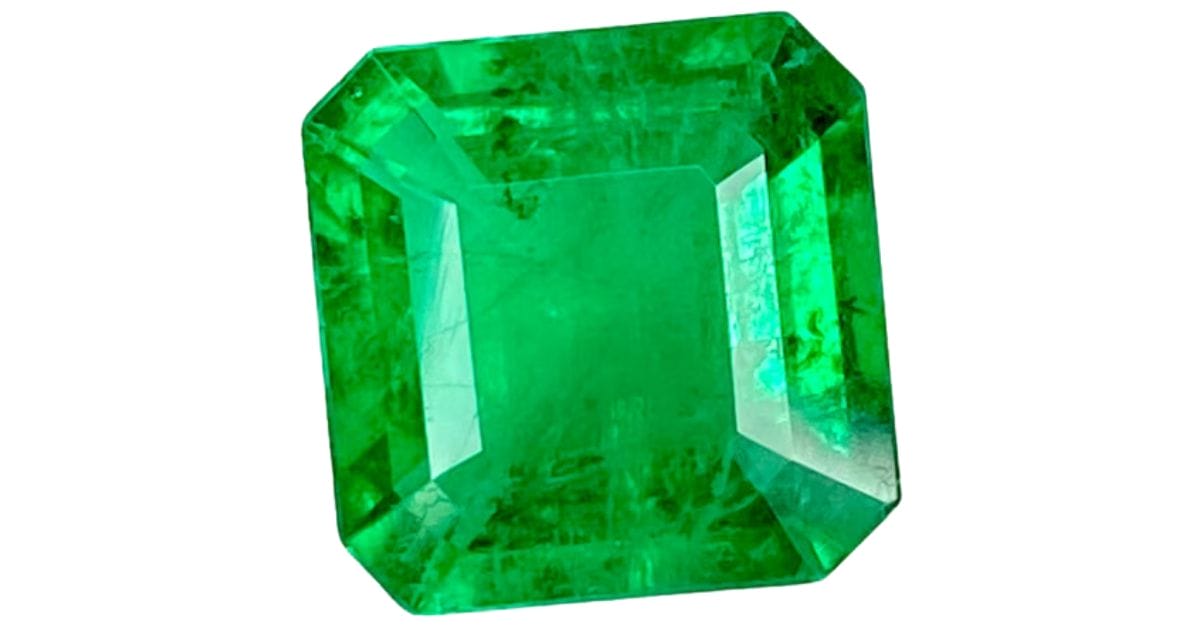There are different types of emeralds, each with its own characteristics and origin. Colombian emeralds, cat’s eye emeralds, and Sandawana emeralds are some good examples of the variety available.
Each kind of emerald has its own special look and comes from different parts of the world. This makes exploring them exciting because there’s always something new to discover.
People enjoy emeralds for many reasons, including their lovely green color. Learning about them can be fun and interesting, especially when you find out where they come from and what makes each type special.
The Different Types Of Emeralds
Emeralds are fascinating gemstones that come in a variety of types, mostly categorized by the place they were mined. This classification helps identify the characteristics and quality of each emerald.
Colombian Emerald
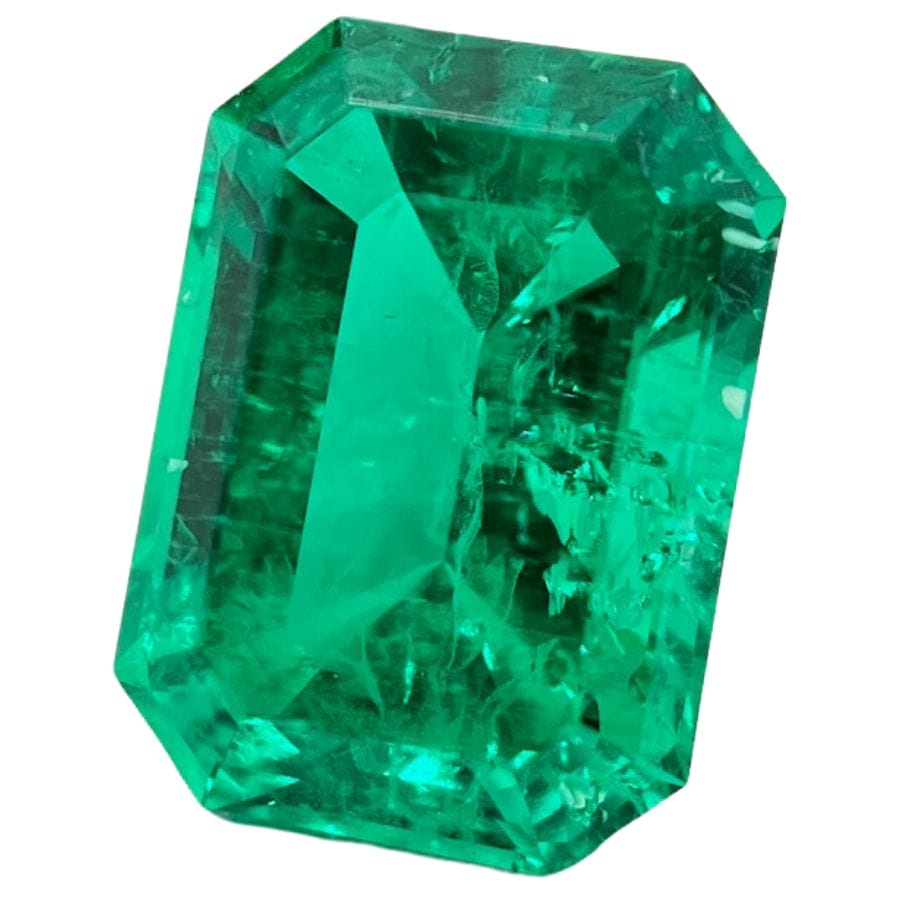
Colombian emeralds are known for their vibrant, pure green color, which is often described as warmer and more intense than other emeralds. The rich color is a result of the unique way that color is distributed during the emeralds’ formation.
The unique distribution of color during its formation can make the rough Colombian emerald especially challenging to work with. As the emerald’s color becomes more intense closer to the surface, experts must plan and cut the stone carefully.
If not, the finished gem might appear much lighter than its original, vibrant hue. This process requires skill to ensure the stone’s deep green essence is preserved.
When it comes to what emeralds are worth, their value can vary widely based on their color, clarity, cut, and carat weight. Emeralds, including those from Colombia, are highly valued in the market, with top-quality stones fetching premium prices.
Where you can find Colombian emeralds
These emeralds are discovered in specific regions within Colombia, such as the Boyacá and Cundinamarca departments.
DON'T MISS OUT ON ANY GREAT FINDS!
While you're out searching you're going to find A LOT of other interesting rocks and minerals along the way. The last thing you want to do is toss out something really interesting or valuable. It can be easy to misidentify things without a little guidance.
You absolutely need a good reference guide in order to understand what you're looking at!
We've put together a fantastic field guide that makes identifying 140 of the most interesting and valuable rocks and minerals you will find REALLY EASY. It's simple to use, really durable, and will allow you to identify just about any rock and mineral you come across. Make sure you bring it along on your hunt!
Now, back to the identification specifics:
Brazilian Emerald
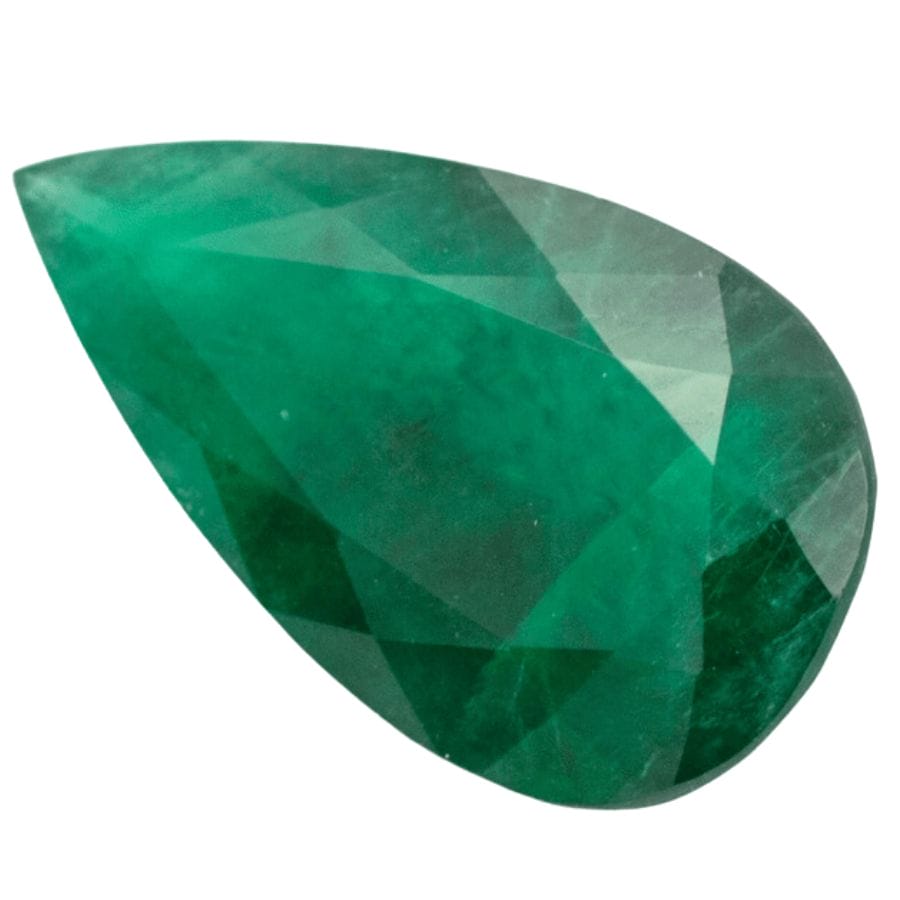
Brazilian emeralds have a broad spectrum of green shades, from light to very deep green. This variety in color gives each stone a distinct appearance, highlighting what emeralds look like in their diverse forms.
These emeralds can also show a remarkable clarity, making them highly valued for their transparency. The clearness of these gems allows for a captivating depth of color to be seen and appreciated.
Some Brazilian emeralds exhibit unique color zoning, which adds to their visual appeal. This means that the color can vary within the same stone, creating beautiful patterns and contrasts.
Additionally, the inclusions found in Brazilian emeralds, such as crystals and fluid pockets, contribute to their natural beauty. These features not only tell the story of the gem’s formation but also enhance its overall allure.
Where you can find Brazilian emeralds
Brazil’s emerald sources are primarily located in the states of Bahia, Goiás, and Minas Gerais.
Minas Gerais, particularly the Nova Era and Itabira regions, stands out for producing emeralds with exceptional clarity and color.
Russian Emerald
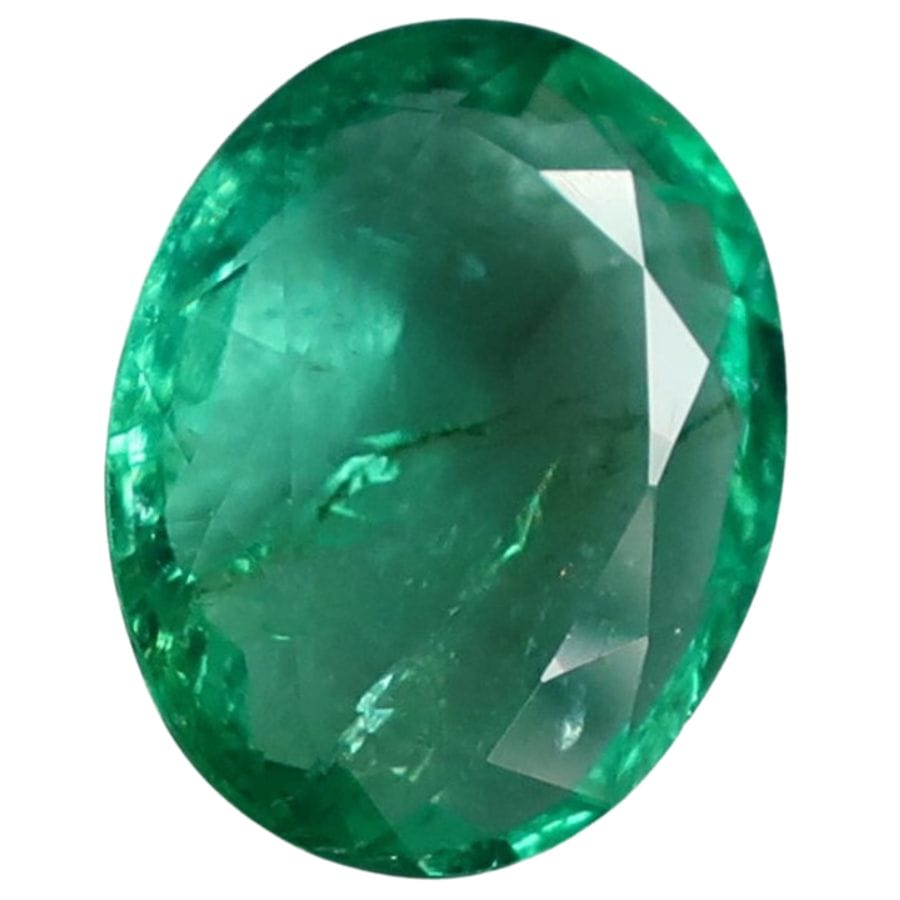
Russian emeralds are known for their unique deep green color, which sets them apart from emeralds found in other parts of the world.
These emeralds can range from a light green to an almost opaque dark green, showing a wide variety of shades.
The clarity of Russian emeralds is also noteworthy, with many stones displaying a high level of transparency. This clearness allows for the true green color to shine through, making the stones particularly appealing.
When cut and polished, Russian emeralds reveal a brilliant sparkle that enhances their deep green hues. The cutting process is crucial in showcasing the stone’s natural beauty and color intensity.
Despite their beauty, the appearance of Russian emeralds can be affected by the presence of natural inclusions. These inclusions are like fingerprints, making each stone distinct but not detracting from the emerald’s overall allure.
Where you can find Russian emeralds
Russian emeralds are primarily found in the Ural Mountains, a major mountain range in Russia.
Zambian Emerald
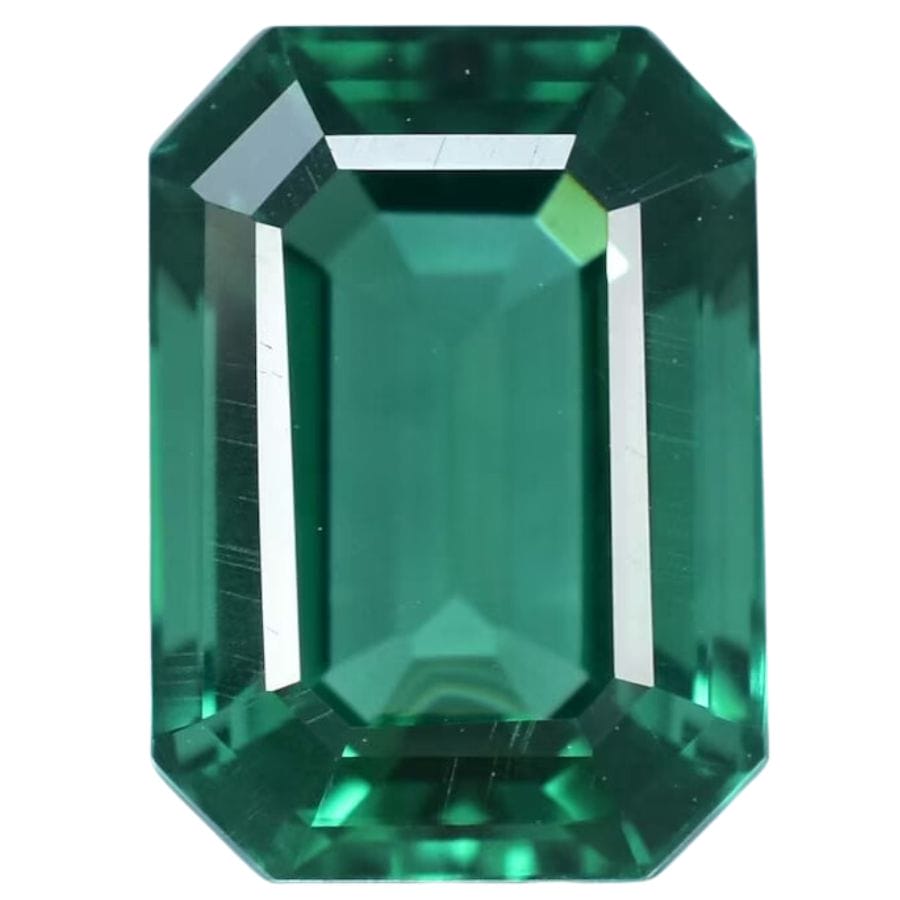
Zambian emeralds are known for their unique cooler, more bluish green color which sets them apart from other types of emerald. This distinct shade is a result of higher iron content in the stones, giving them a vibrant and appealing hue.
Unlike emeralds from other regions, Zambian emeralds tend to be a bit stronger due to their less brittle and porous nature. This makes them slightly more durable and resistant to wear over time.
Zambian emeralds account for about 20% of the global emerald market and are celebrated for having fewer inclusions compared to their counterparts. This clarity is a sought-after characteristic that enhances their overall appearance and value.
Understanding the different types of emeralds can help appreciate the unique qualities that Zambian emeralds bring to the table.
Where you can find Zambian emeralds
The most notable area for Zambian emerald mining is the Kafubu River area.
Ethiopian Emerald
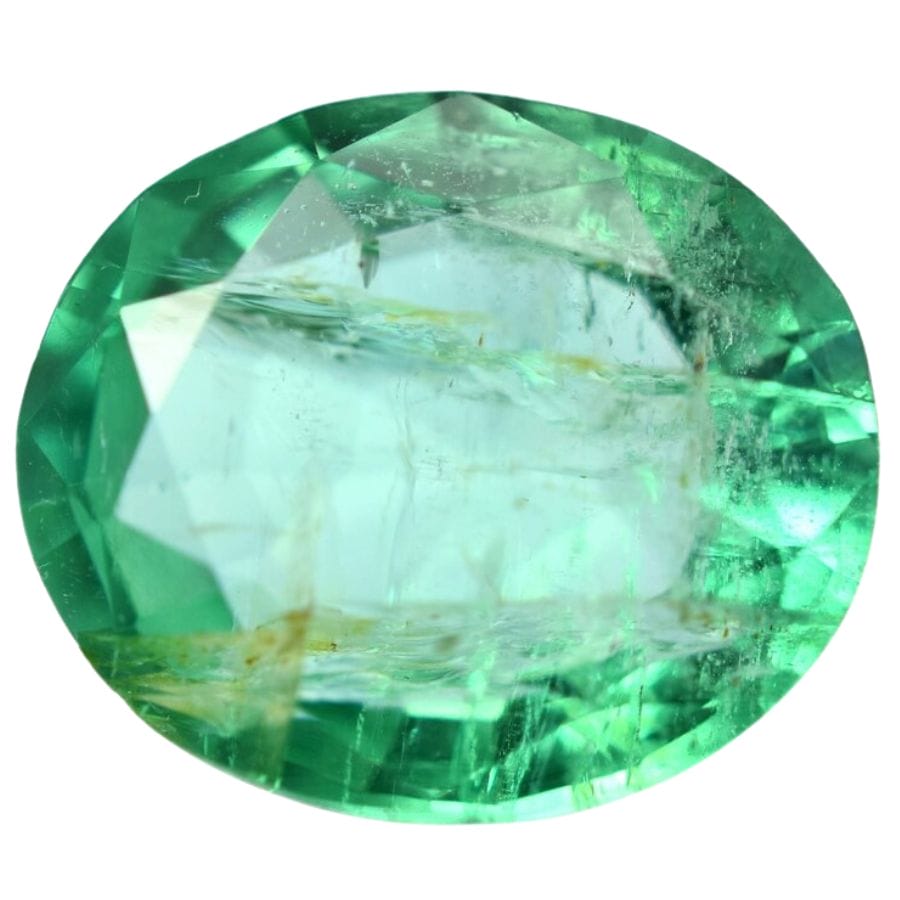
Ethiopian emeralds are known for their bright, saturated green shades, often described as glowing or neon, similar to the finest from Colombia or even the vivid hues of paraíba tourmaline.
The best stones boast a vibrant grass green or slightly bluish green color, standing out without the need for any oil enhancement.
The primary coloring agents in Ethiopian emeralds are iron, chromium, and vanadium, with a higher iron content compared to their Colombian counterparts. This unique composition results in less fluorescence under ultraviolet light.
This means that they maintain their beautiful color consistency in both daylight and artificial light. This characteristic sets Ethiopian emeralds apart, giving them a unique appeal.
Inclusions such as black mica crystals are common in Ethiopian emeralds, but they also can exhibit the coveted “gota de aceite” or “drop of oil” effect.
Where you can find Ethiopian emeralds
Ethiopian emeralds are found in the northern part of Ethiopia.
Cat’s Eye Emerald
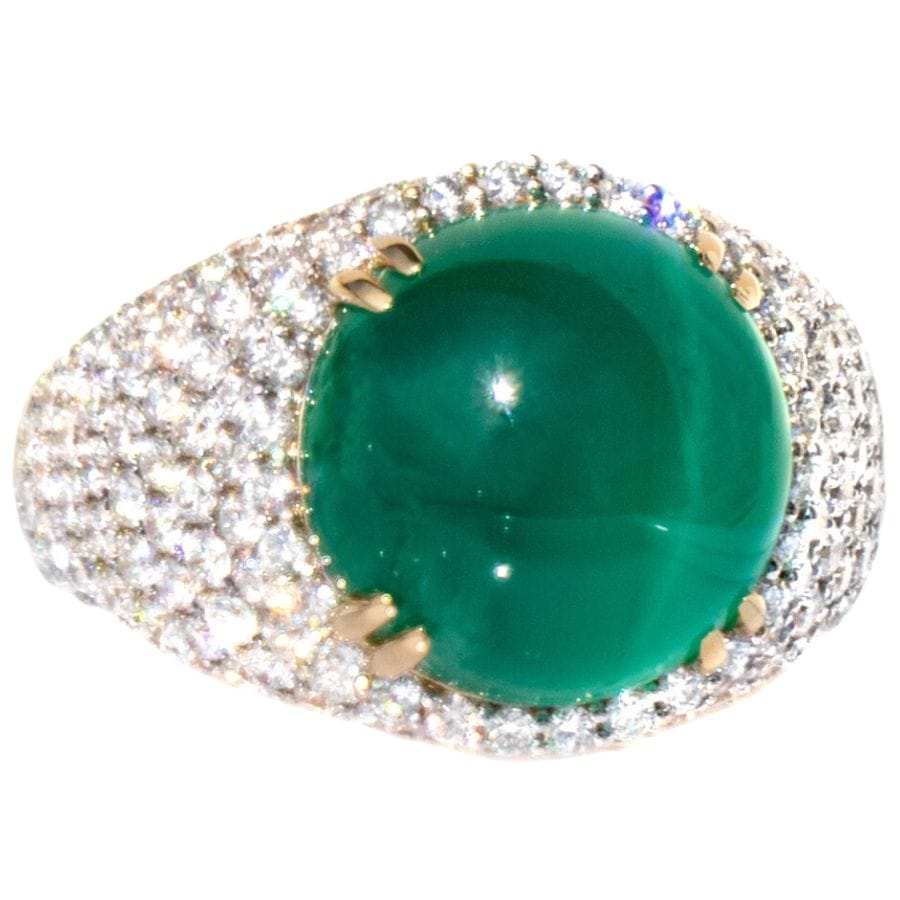
Cat’s eye emeralds are fascinating gemstones with a unique feature known as chatoyancy. This effect creates a narrow, shimmering band of light across the surface that resembles a cat’s eye.
The chatoyancy occurs due to the presence of parallel fibrous or needle-like inclusions within the stone. When light hits these inclusions, it reflects in a way that produces the striking cat’s eye appearance.
These emeralds have a range of green colors, from light to deep shades. The depth of color, combined with the cat’s eye effect, makes them very special and appealing.
Cat’s eye emeralds are not only about their captivating look. Their beauty is enhanced by the way they catch and reflect light, bringing attention to the unique cat’s eye band.
Where you can find cat’s eye emeralds
Cat’s eye emeralds can be found in a few locations around the world, including Brazil.
For those interested in discovering more about these fascinating gems and where to find them, checking out our rockhounding guide is a great idea. It highlights some of the best rockhounding locations for enthusiasts to explore.
Panjshir Emerald
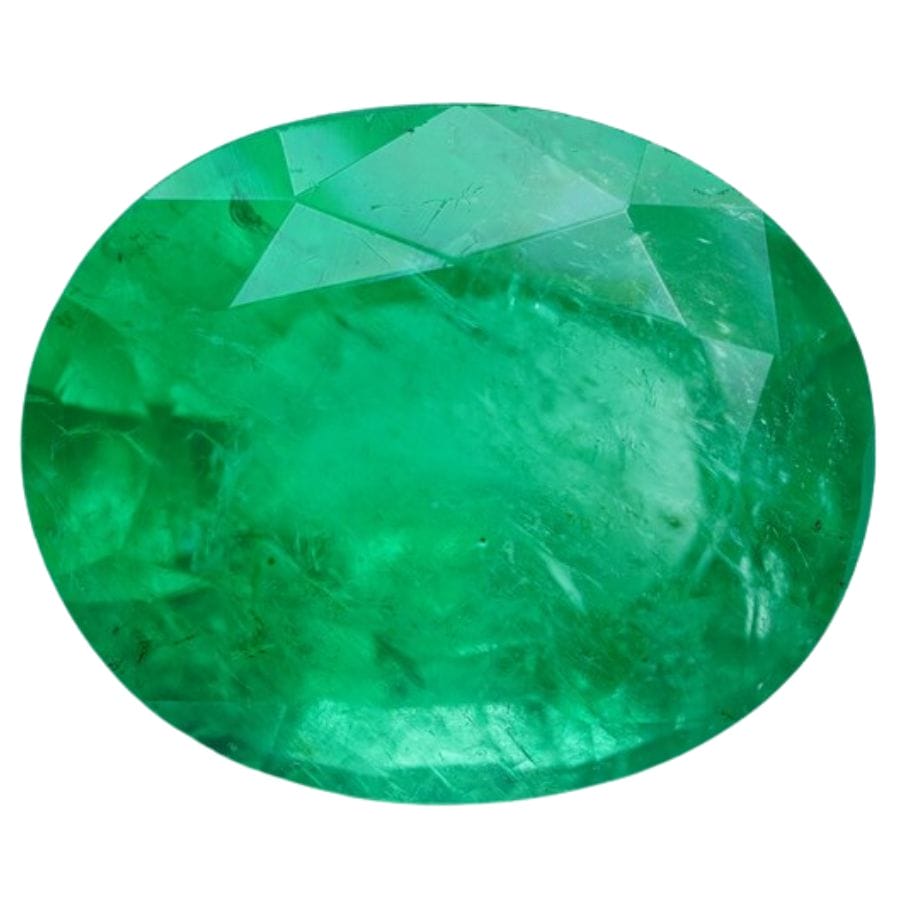
Panjshir emeralds stand out for their bright neon green color and remarkable transparency. However, they often have many inclusions and cracks on the surface, and are filled with fissures.
Because of this, pieces with clear, vivid colors and larger sizes are very rare and expensive.
Interestingly, these emeralds are similar to Colombian emeralds because they both have similar jagged inclusions.
When it comes to cutting, Panjshir emeralds present a challenge due to their complex growth patterns, fractures, and color variations.
The best color is often found near the surface of the crystal, and cutters work carefully to enhance this color.
Where you can find Panjshir emeralds
Panjshir emeralds come from the Panjshir Valley in Afghanistan.
Trapiche Emerald
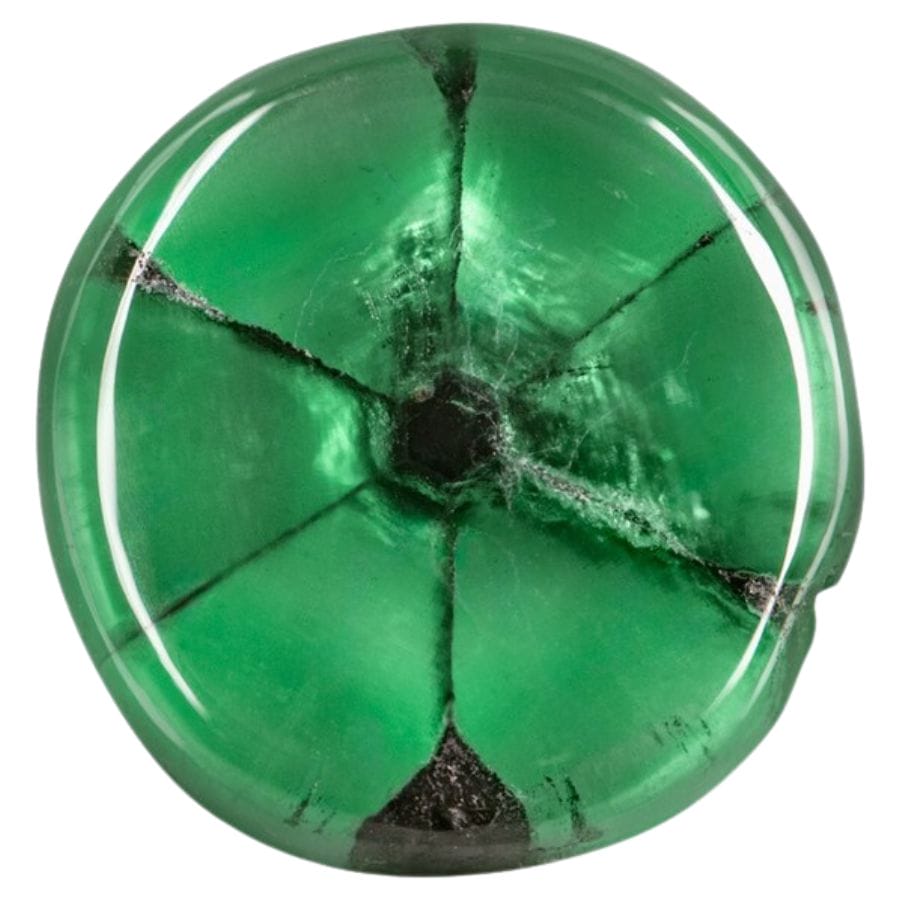
Trapiche emeralds are unique because they have a distinct pattern that resembles the spokes of a wheel. These patterns form naturally, creating a star-like appearance in the center of the gemstone.
The dark, spoke-like inclusions contrast with the emerald’s green color, making each stone look incredibly striking. This pattern is caused by the presence of black carbon impurities that get trapped during the emerald’s growth process.
Unlike other emeralds, trapiche emeralds have these radiating lines that divide the gem into six equal sections. This gives them a very distinctive look that is easy to recognize.
Each trapiche emerald is one-of-a-kind due to its unique pattern. The beauty of these emeralds lies in their natural design, which cannot be replicated.
Where you can find trapiche emeralds
Emeralds are precious gems that can be found in various parts of the world, including Colombia, Brazil, and Pakistan.
For those interested in learning more about where to find emeralds and other gems, our crystal/gem mining guide provides great tips on finding gems near you. It offers helpful information for anyone looking to explore gem hunting as a hobby.
Torrington Emerald
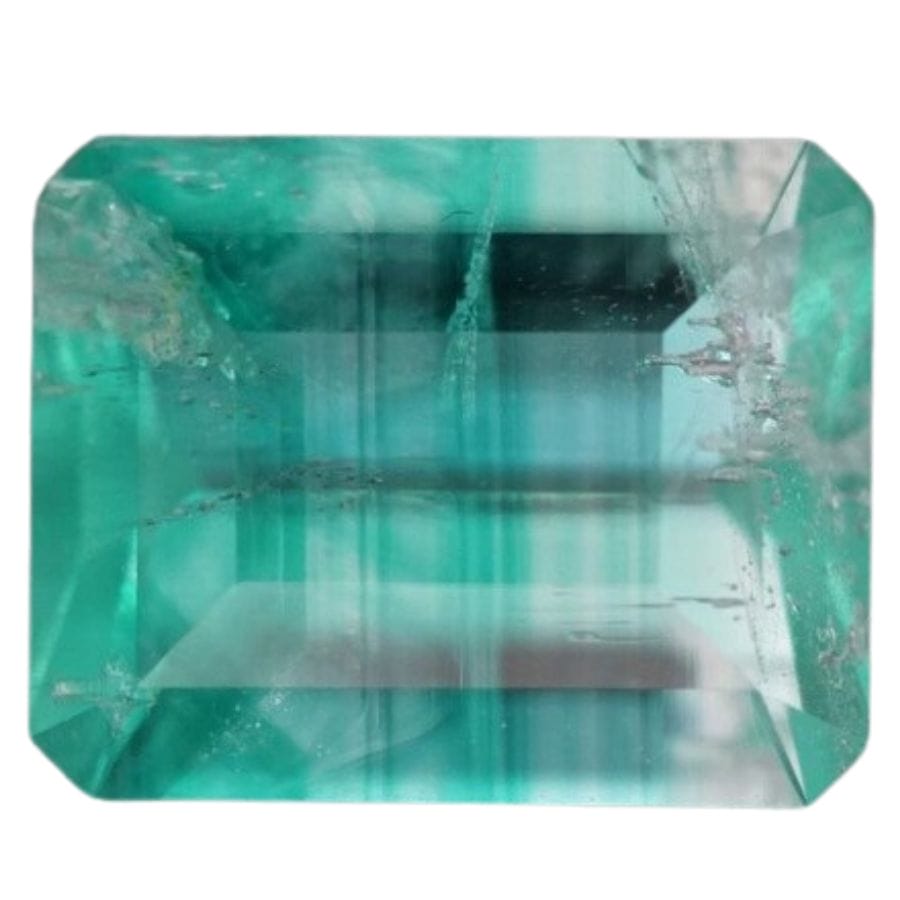
Torrington emeralds are known for their bright colors and clarity, although they are relatively rare. These gems have natural inclusions, with larger stones typically showing fewer imperfections and more vibrant colors compared to smaller ones.
These emeralds are distinctive because of their color banding, displaying unique patterns of emerald green and clear beryl.
This feature is caused by the way chromium and vanadium are distributed in the gem, creating alternating bands of color.
Scientists have found out that Torrington emeralds were made from very hot, salty water. They can tell because of tiny bubbles trapped inside the emeralds.
These bubbles show that the green emerald parts and the clear parts were made at different times or in different ways, which is why the emeralds have cool stripes of color.
Where you can find Torrington emeralds
Torrington emeralds are found in the Torrington region of New South Wales, Australia.
Sandawana Emerald
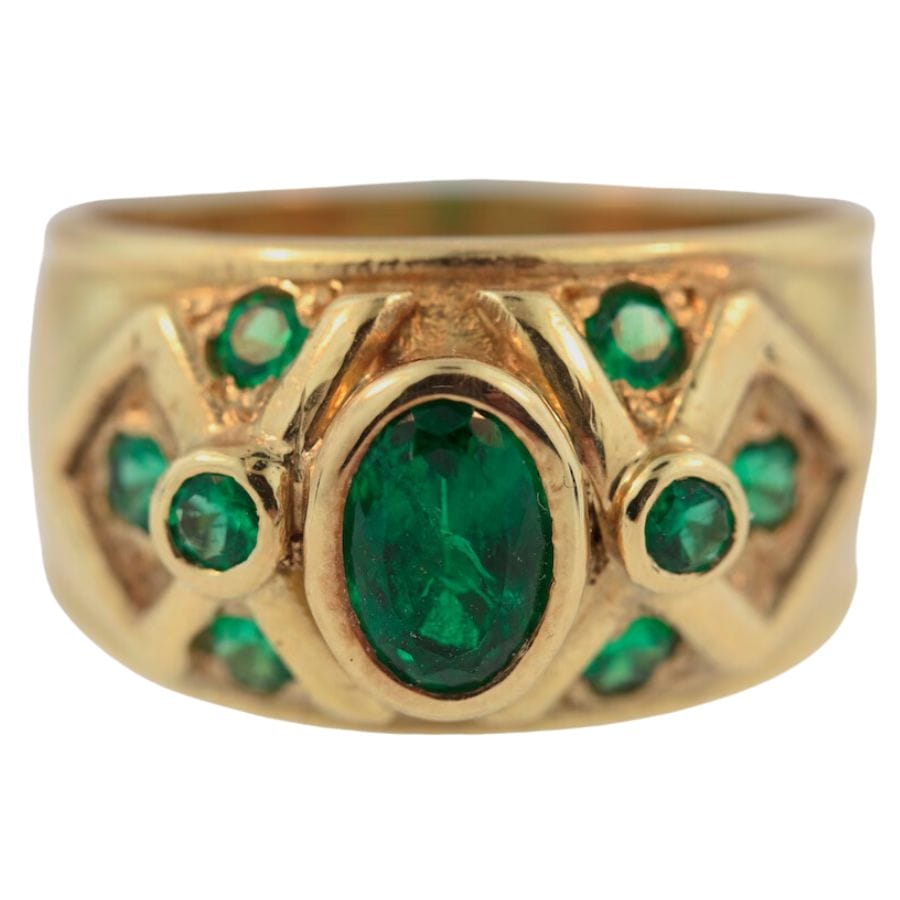
These emeralds from the Sandawana mine are usually found in very small sizes, with an average weight of around 0.08 carats. They are known for their beautiful bluish-green color that remains even after the stones are cut and polished.
Despite their tiny dimensions, often as small as 1 mm square, these emeralds pack a punch with their intense green hue.
Sandawana emeralds are also recognized for their even color distribution and the presence of inclusions.
Where you can find Sandawana emeralds
Sandawana emeralds are found in Zimbabwe, in the southern part of Africa.
Swat Emerald
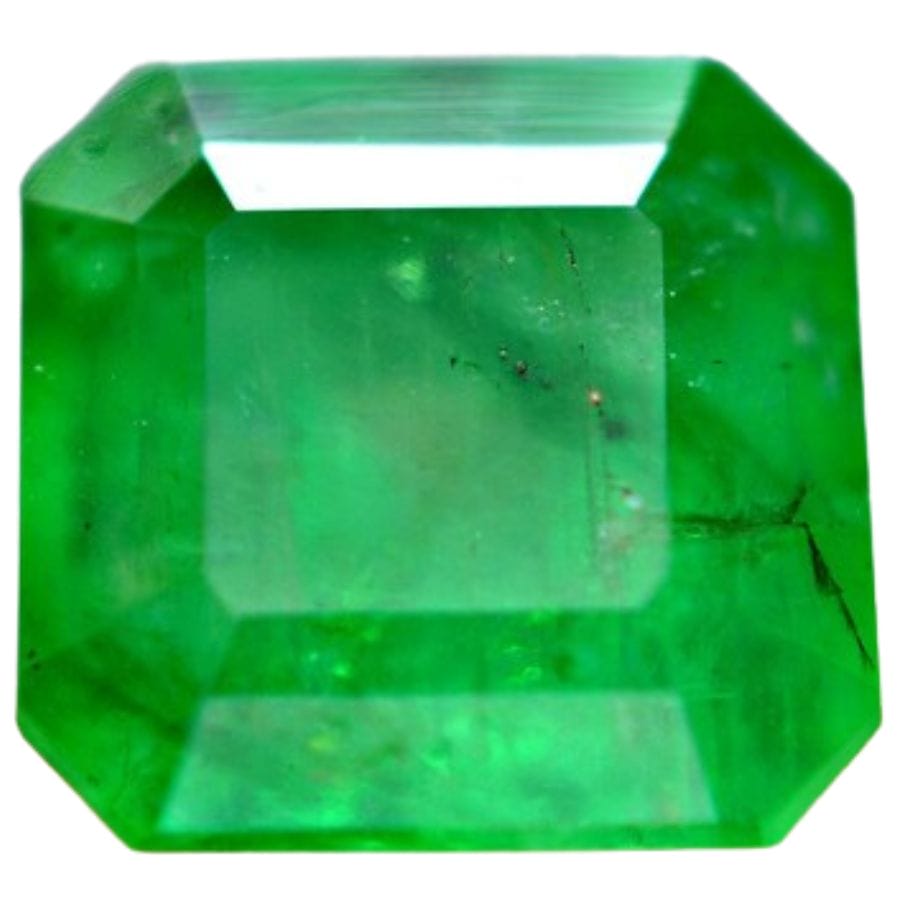
Swat emeralds are famous for their bright green color that shines even in small sizes. These emeralds have a unique look because of their color and the way they grow in different layers.
Some Swat emeralds show a trapiche pattern. This pattern is made by tiny bits inside the emerald that only show up in the middle green layer.
A slice of a Swat emerald can reveal its growth history, showing a clear core, surrounded by a light green zone, and then a vibrant green outer layer.
The darkest green part of the Swat emerald is usually at the rim, making a striking contrast with the lighter green and clear layers.
This pattern tells us that the emerald grew in three parts, each adding a new layer of color and texture to the gem.
Where you can find Swat emeralds
Swat emeralds come from the Swat Valley, located in Pakistan.

